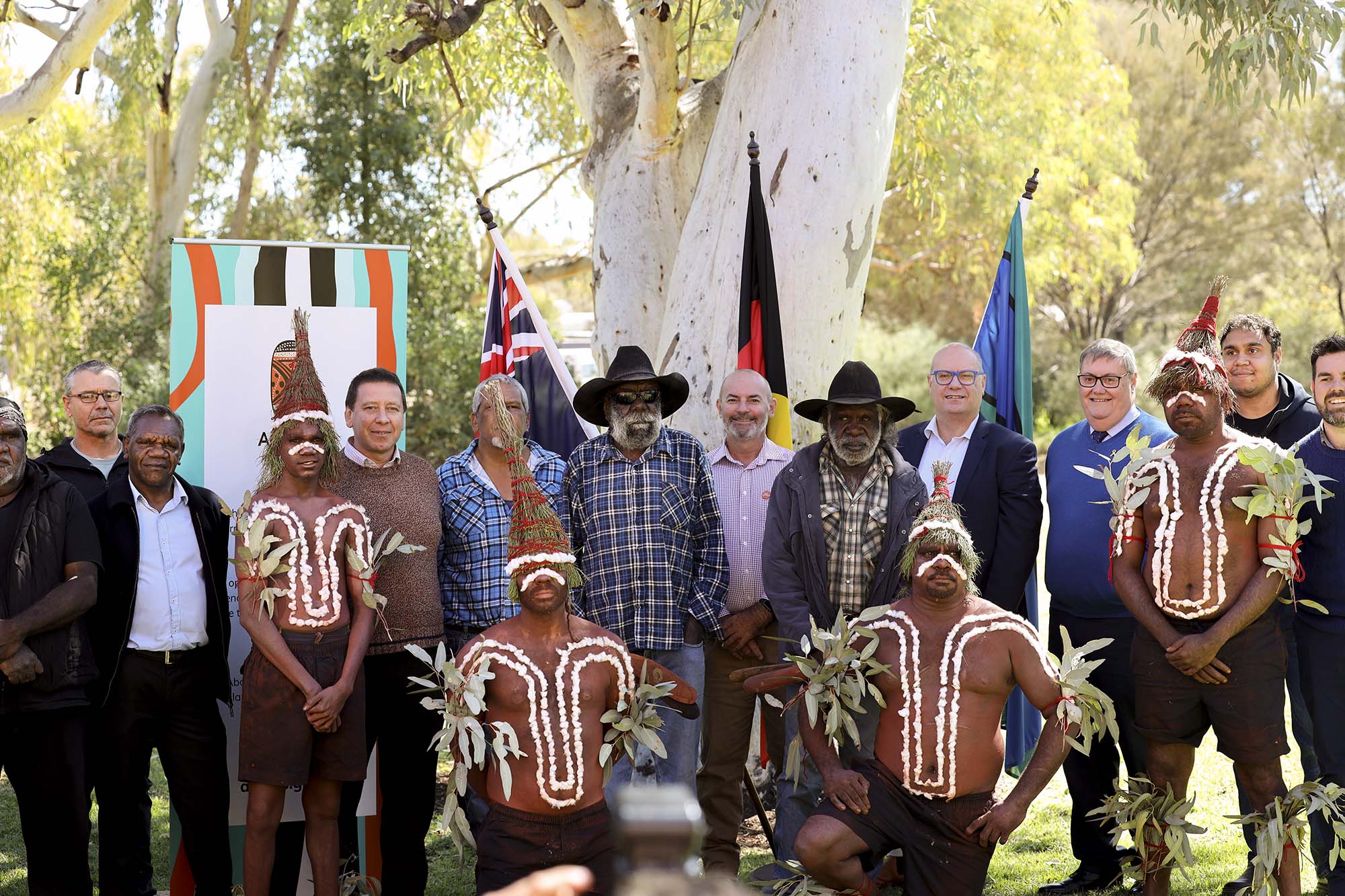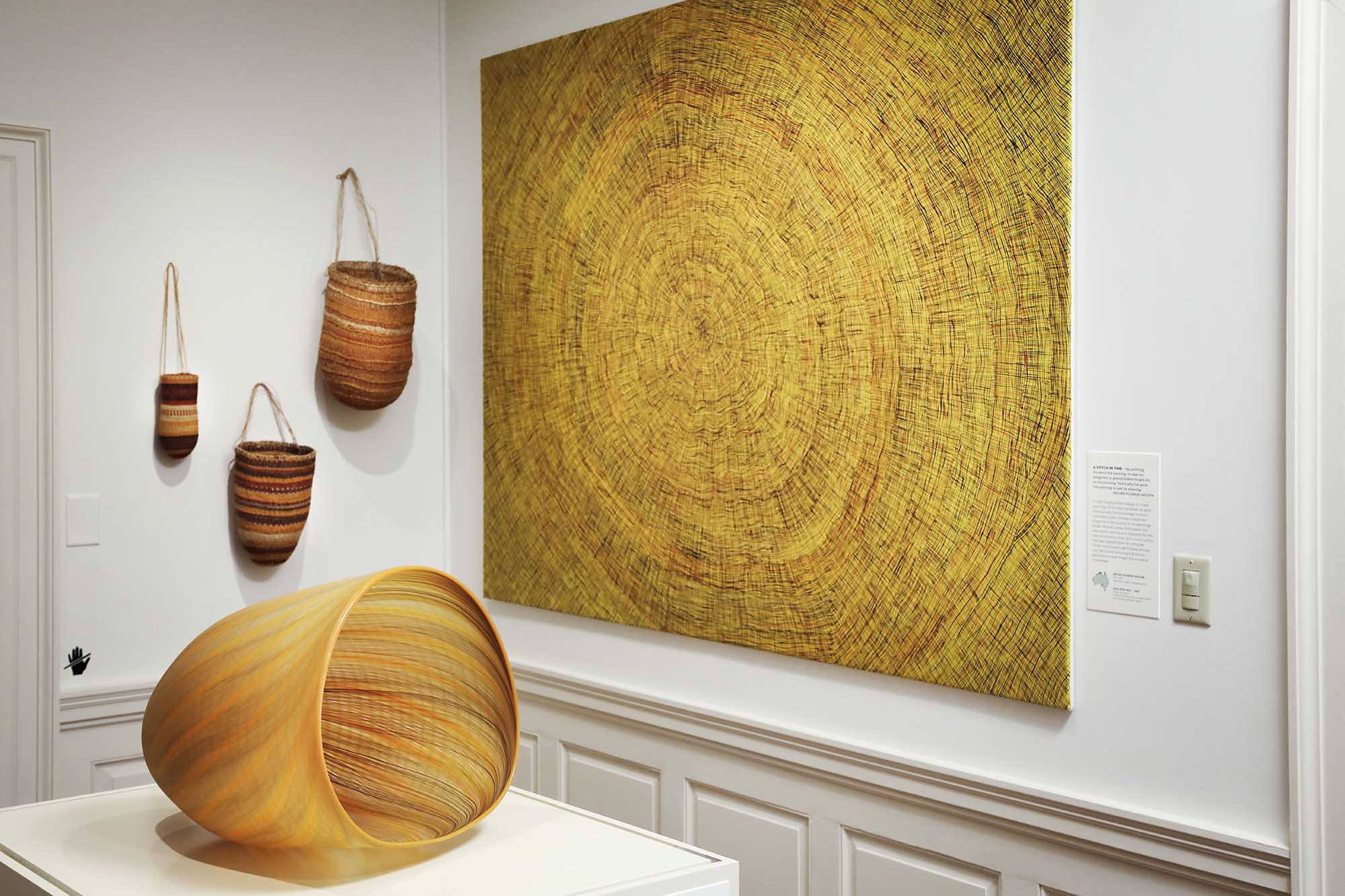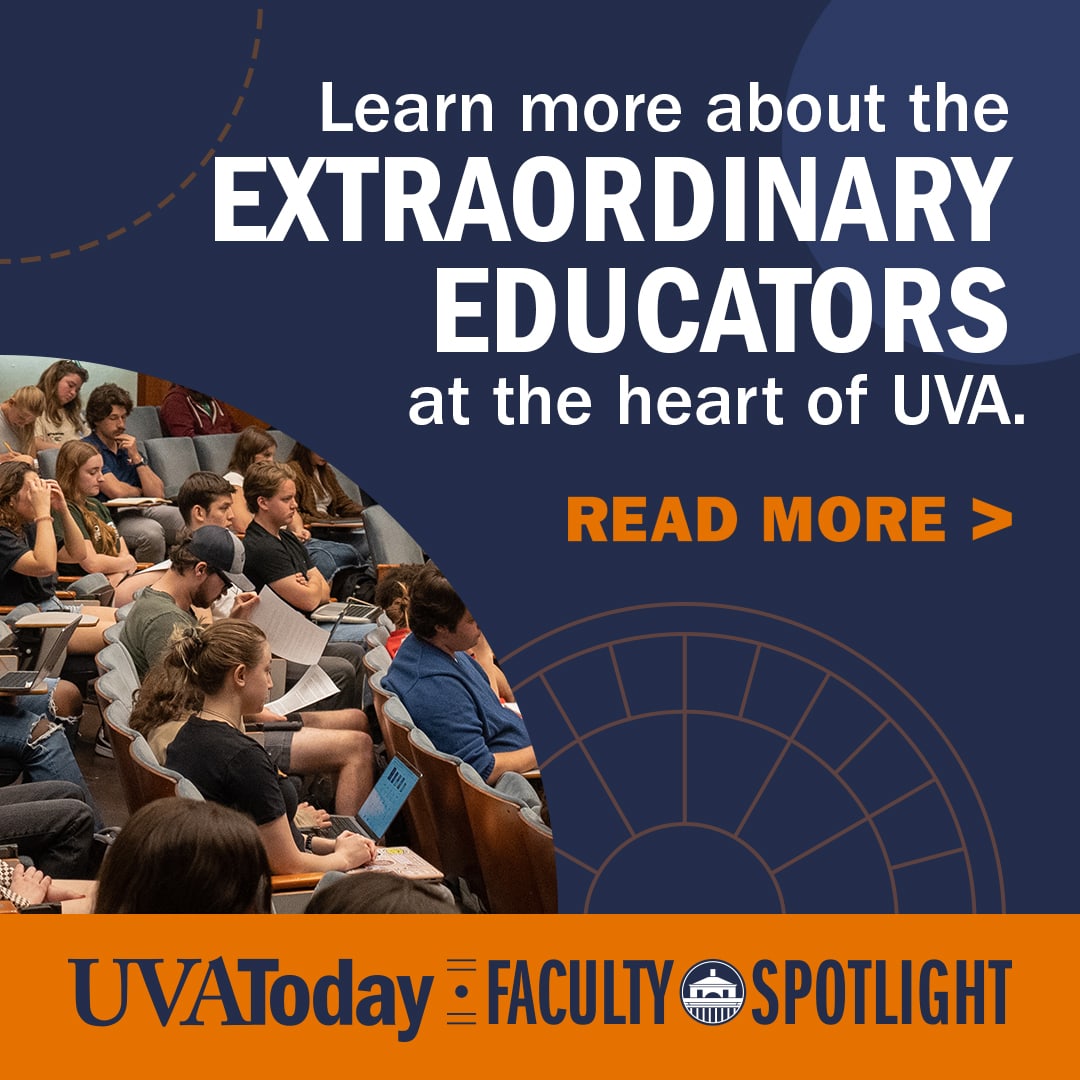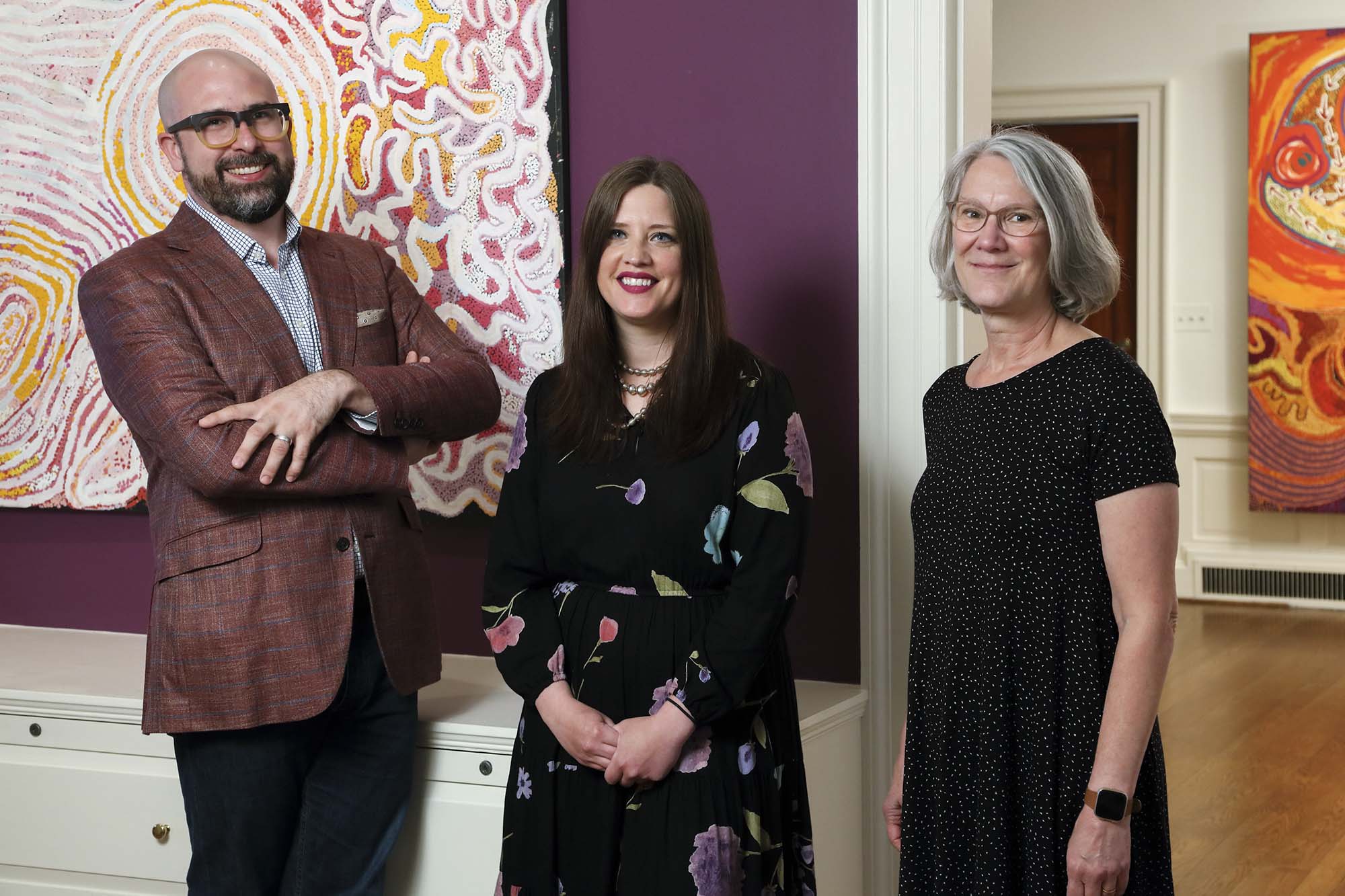A special ceremony held last week in Australia celebrated 17 sacred objects from the Kluge-Ruhe Aboriginal Art Collection at the University of Virginia being repatriated to the Arrernte, Warlpiri and Warumungu communities in Central Australia.
Kluge-Ruhe’s collection at UVA consists of more than 2,100 paintings, ornaments, weapons, tools and other items and is the only museum outside of Australia dedicated to the exhibition and study of Indigenous Australian art and culture. Most of those items have been purchased through Indigenous art centers from artists who created them specifically as artworks intended to be sold, and often sold abroad.
The purchase history of the 17 items in question is slightly murkier. Collector Edward Ruhe, whose Indigenous art collections would later become the foundation of the Kluge-Ruhe collection, purchased the objects from Australian collectors in the mid-20th century, but how those collectors acquired them is not known. The objects themselves were never exhibited at Kluge-Ruhe because of their sacred and sensitive nature. Traditionally, only a select group of elders within Indigenous communities were able to see and handle them.
In 2019, leaders at the Australian Institute of Aboriginal and Torres Strait Islander Studies, or AIATSIS, approached Kluge-Ruhe Director Margo Smith about returning the sacred objects as part of their Return of Cultural Heritage pilot project. Smith, Kluge-Ruhe Curator Henry Skerritt and Collections Manager Nicole Wade were eager to help and delighted to see the sacred objects returned to the people for whom they hold such high importance.

Community leaders and AIATSIS representatives celebrated the repatriation in a ceremony last week at the Museum of Central Australia. (Photo courtesy of the Australian Institute of Aboriginal and Torres Strait Islander Studies)
“All of us at the museum are very happy to see these objects going home to the people who have such a close connection to them,” Smith said. “We also hope that Kluge-Ruhe and UVA can forge a closer relationship with these communities as we return these objects, so that we can create more connections and learning opportunities for the future.”
A repatriation ceremony held in Australia last week celebrated objects returned from the Manchester Museum in the United Kingdom and the pending return of the objects from the Kluge-Ruhe, which are being prepared for transfer now. Peter Wallace Peltharre, a senior leader within the Arrernte community, spoke of the importance of the return of the sacred objects as a means of passing down cultural traditions.
“We are proud to do this work for our younger generation in teaching them our Law, our way of living and about our grandfathers and all those who lived in those days,” Peltharre said in an AIATSIS press release. “So, we are proud to do this for each and every one of us – for all the Arrernte families. Not only Arrernte, but we can teach all our other young men, too.”
Craig Ritchie, CEO of the Australian Institute of Aboriginal and Torres Strait Islander Studies, said he was “delighted that the staff at the Kluge-Ruhe collection responded so readily to [our] outreach.”











